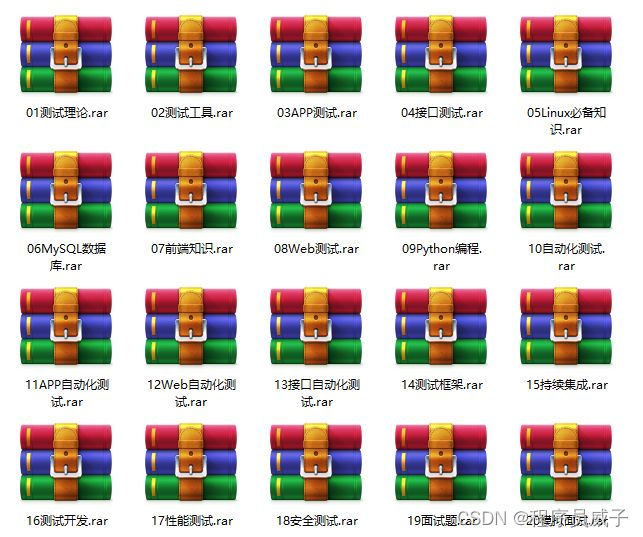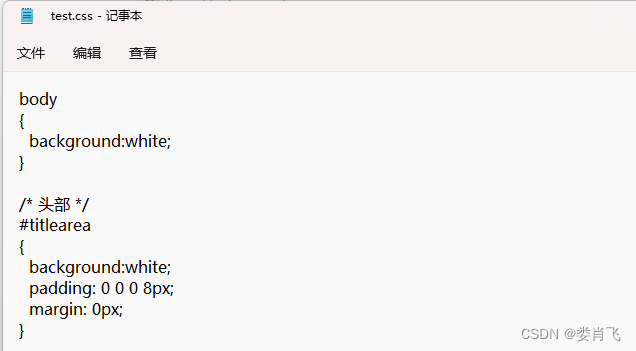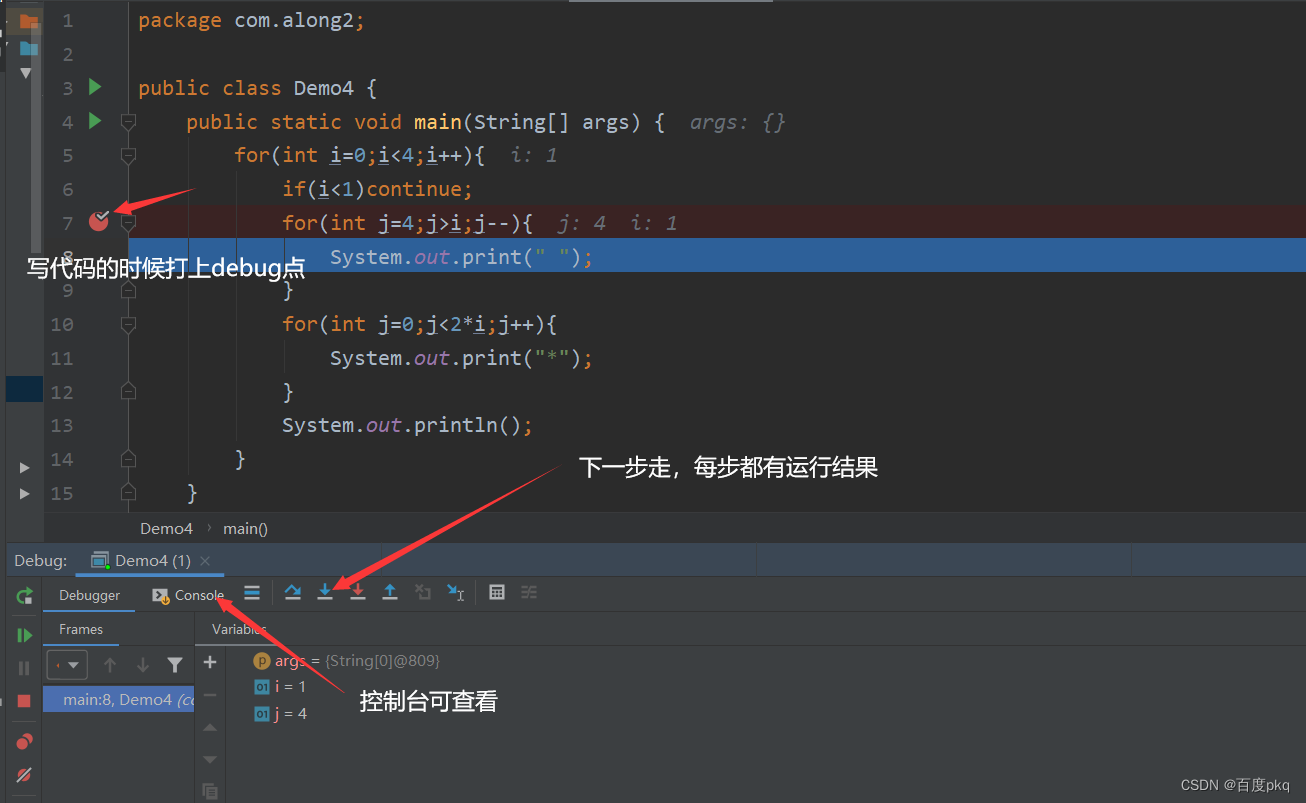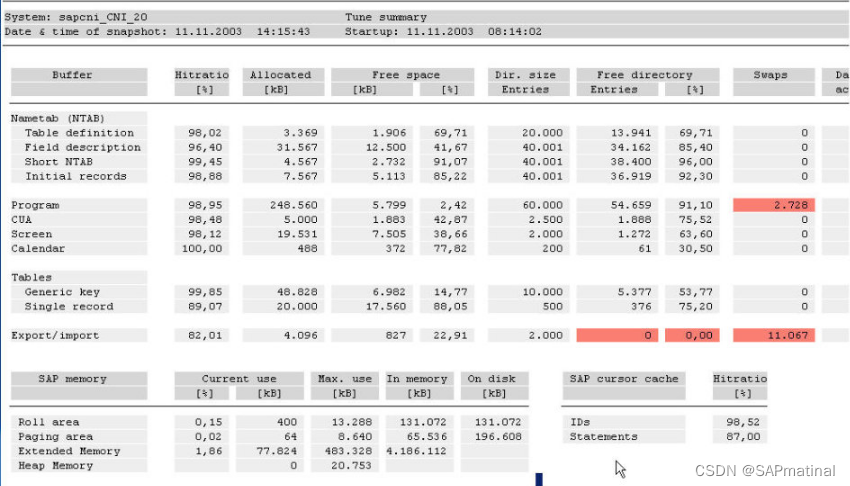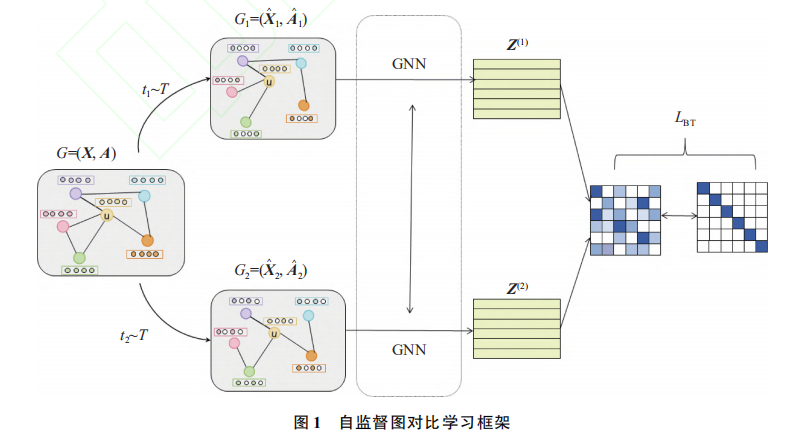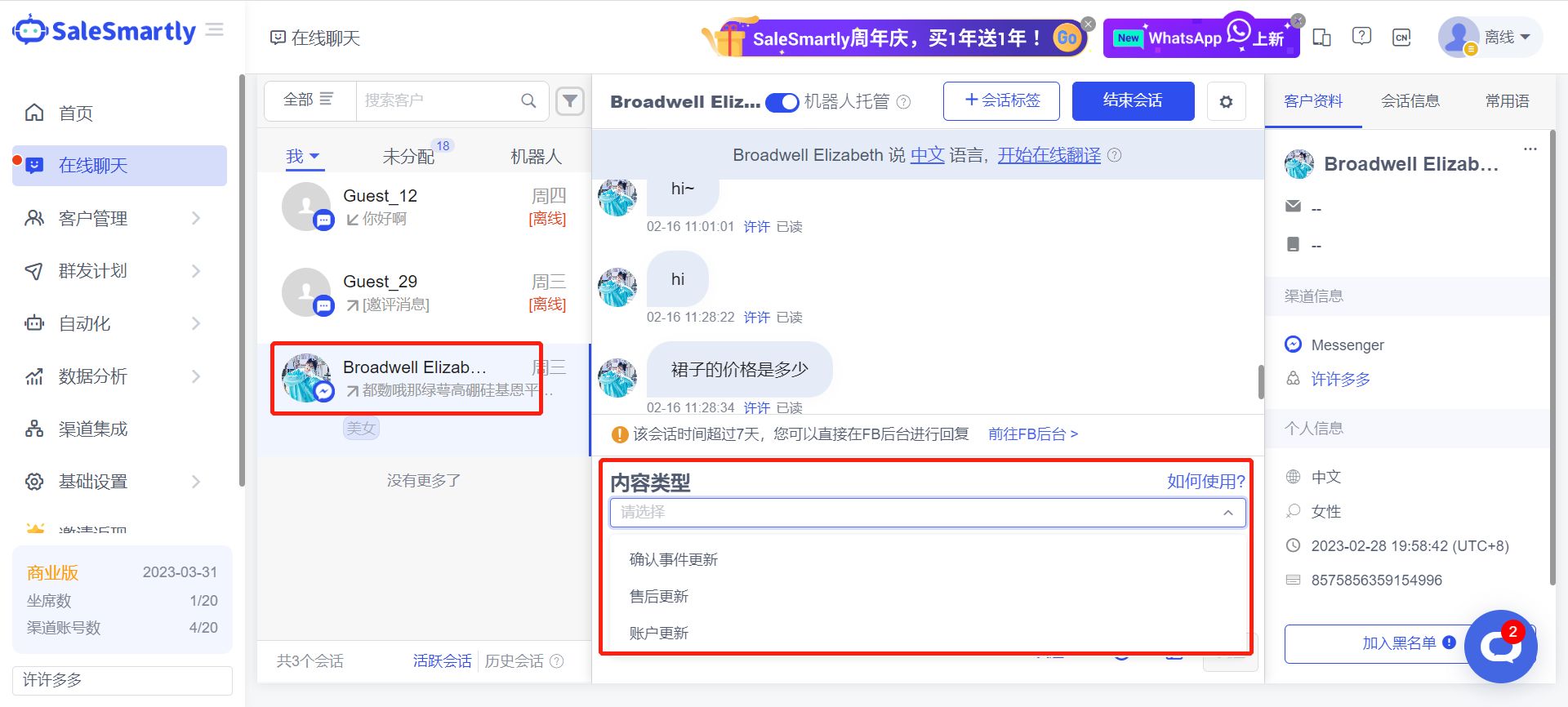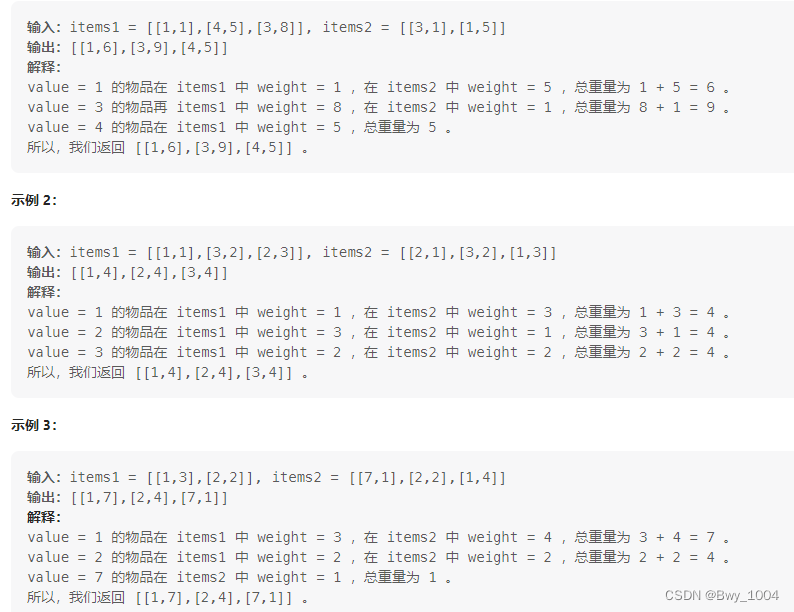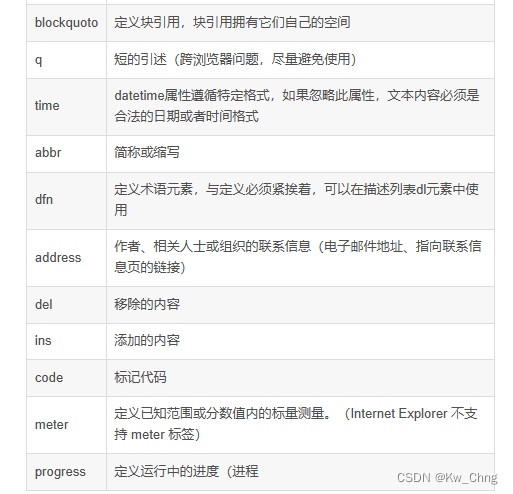文章目录
- 一、MyBatis配置文件
- 二、SqlSessionFactory的获取
- 1、初始化XML配置的Document以及其他对象
- 2、解析配置文件
- (1)配置Environment
- (2)存放Mapper
- (3)解析Mapper
- 3、构造SqlSessionFactory
- 4、总结
- 未完待续
一、MyBatis配置文件
MyBatis 的配置文件包含了会深深影响 MyBatis 行为的设置和属性信息。 配置文档的顶层结构如下:
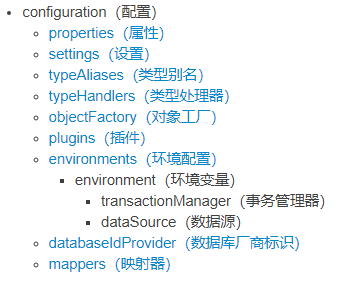
MyBatis的Configuration类是一个非常重要的类,它相当于Spring的ApplicationContext,里面包含着所有的配置与属性信息。
public class Configuration {
protected Environment environment;
// 允许在嵌套语句中使用分页(RowBounds)。如果允许使用则设置为false。默认为false
protected boolean safeRowBoundsEnabled;
// 允许在嵌套语句中使用分页(ResultHandler)。如果允许使用则设置为false
protected boolean safeResultHandlerEnabled = true;
// 是否开启自动驼峰命名规则(camel case)映射,即从经典数据库列名 A_COLUMN
// 到经典 Java 属性名 aColumn 的类似映射。默认false
protected boolean mapUnderscoreToCamelCase;
// 当开启时,任何方法的调用都会加载该对象的所有属性。否则,每个属性会按需加载。默认值false (true in ≤3.4.1)
protected boolean aggressiveLazyLoading;
// 是否允许单一语句返回多结果集(需要兼容驱动)。
protected boolean multipleResultSetsEnabled = true;
// 允许 JDBC 支持自动生成主键,需要驱动兼容。这就是insert时获取mysql自增主键/oracle sequence的开关。
// 注:一般来说,这是希望的结果,应该默认值为true比较合适。
protected boolean useGeneratedKeys;
// 使用列标签代替列名,一般来说,这是希望的结果
protected boolean useColumnLabel = true;
// 是否启用缓存
protected boolean cacheEnabled = true;
// 指定当结果集中值为 null 的时候是否调用映射对象的 setter(map 对象时为 put)方法,
// 这对于有 Map.keySet() 依赖或 null 值初始化的时候是有用的。
protected boolean callSettersOnNulls;
// 允许使用方法签名中的名称作为语句参数名称。 为了使用该特性,你的工程必须采用Java 8编译,
// 并且加上-parameters选项。(从3.4.1开始)
protected boolean useActualParamName = true;
//当返回行的所有列都是空时,MyBatis默认返回null。 当开启这个设置时,MyBatis会返回一个空实例。
// 请注意,它也适用于嵌套的结果集 (i.e. collectioin and association)。(从3.4.2开始)
// 注:这里应该拆分为两个参数比较合适, 一个用于结果集,一个用于单记录。
// 通常来说,我们会希望结果集不是null,单记录仍然是null
protected boolean returnInstanceForEmptyRow;
protected boolean shrinkWhitespacesInSql;
// 指定 MyBatis 增加到日志名称的前缀。
protected String logPrefix;
// 指定 MyBatis 所用日志的具体实现,未指定时将自动查找。一般建议指定为slf4j或log4j
protected Class<? extends Log> logImpl;
// 指定VFS的实现, VFS是mybatis提供的用于访问AS内资源的一个简便接口
protected Class<? extends VFS> vfsImpl;
protected Class<?> defaultSqlProviderType;
// MyBatis 利用本地缓存机制(Local Cache)防止循环引用(circular references)和加速重复嵌套查询。
// 默认值为 SESSION,这种情况下会缓存一个会话中执行的所有查询。
// 若设置值为 STATEMENT,本地会话仅用在语句执行上,对相同 SqlSession 的不同调用将不会共享数据。
protected LocalCacheScope localCacheScope = LocalCacheScope.SESSION;
// 当没有为参数提供特定的 JDBC 类型时,为空值指定 JDBC 类型。 某些驱动需要指定列的 JDBC 类型,
// 多数情况直接用一般类型即可,比如 NULL、VARCHAR 或 OTHER。
protected JdbcType jdbcTypeForNull = JdbcType.OTHER;
// 指定对象的哪个方法触发一次延迟加载。
protected Set<String> lazyLoadTriggerMethods = new HashSet<>(Arrays.asList("equals", "clone", "hashCode", "toString"));
// 设置超时时间,它决定驱动等待数据库响应的秒数。默认不超时
protected Integer defaultStatementTimeout;
// 为驱动的结果集设置默认获取数量。
protected Integer defaultFetchSize;
// SIMPLE 就是普通的执行器;REUSE 执行器会重用预处理语句(prepared statements);
// BATCH 执行器将重用语句并执行批量更新。
protected ResultSetType defaultResultSetType;
// 默认执行器类型
protected ExecutorType defaultExecutorType = ExecutorType.SIMPLE;
// 指定 MyBatis 应如何自动映射列到字段或属性。
// NONE 表示取消自动映射;
// PARTIAL 只会自动映射没有定义嵌套结果集映射的结果集。
// FULL 会自动映射任意复杂的结果集(无论是否嵌套)。
protected AutoMappingBehavior autoMappingBehavior = AutoMappingBehavior.PARTIAL;
// 指定发现自动映射目标未知列(或者未知属性类型)的行为。这个值应该设置为WARNING比较合适
protected AutoMappingUnknownColumnBehavior autoMappingUnknownColumnBehavior =
AutoMappingUnknownColumnBehavior.NONE;
// settings下的properties属性
protected Properties variables = new Properties();
// 默认的反射器工厂,用于操作属性、构造器方便
protected ReflectorFactory reflectorFactory = new DefaultReflectorFactory();
// 对象工厂, 所有的类resultMap类都需要依赖于对象工厂来实例化
protected ObjectFactory objectFactory = new DefaultObjectFactory();
// 对象包装器工厂,主要用来在创建非原生对象,比如增加了某些监控或者特殊属性的代理类
protected ObjectWrapperFactory objectWrapperFactory = new DefaultObjectWrapperFactory();
// 延迟加载的全局开关。当开启时,所有关联对象都会延迟加载。特定关联关系中可通过设置fetchType属性来覆盖该项的开关状态
protected boolean lazyLoadingEnabled = false;
// 指定 Mybatis 创建具有延迟加载能力的对象所用到的代理工具。MyBatis 3.3+使用JAVASSIST
protected ProxyFactory proxyFactory = new JavassistProxyFactory(); // #224 Using internal Javassist instead of OGNL
// MyBatis 可以根据不同的数据库厂商执行不同的语句,这种多厂商的支持是基于映射语句中的 databaseId 属性。
protected String databaseId;
/**
* Configuration factory class.
* Used to create Configuration for loading deserialized unread properties.
*
* @see <a href='https://github.com/mybatis/old-google-code-issues/issues/300'>Issue 300 (google code)</a>
*/
protected Class<?> configurationFactory;
protected final MapperRegistry mapperRegistry = new MapperRegistry(this);
// mybatis插件列表
protected final InterceptorChain interceptorChain = new InterceptorChain();
protected final TypeHandlerRegistry typeHandlerRegistry = new TypeHandlerRegistry(this);
// 类型注册器, 用于在执行sql语句的出入参映射以及mybatis-config文件里的各种配置
// 比如<transactionManager type="JDBC"/><dataSource type="POOLED">时使用简写
protected final TypeAliasRegistry typeAliasRegistry = new TypeAliasRegistry();
protected final LanguageDriverRegistry languageRegistry = new LanguageDriverRegistry();
protected final Map<String, MappedStatement> mappedStatements = new StrictMap<MappedStatement>("Mapped Statements collection")
.conflictMessageProducer((savedValue, targetValue) ->
". please check " + savedValue.getResource() + " and " + targetValue.getResource());
protected final Map<String, Cache> caches = new StrictMap<>("Caches collection");
protected final Map<String, ResultMap> resultMaps = new StrictMap<>("Result Maps collection");
protected final Map<String, ParameterMap> parameterMaps = new StrictMap<>("Parameter Maps collection");
protected final Map<String, KeyGenerator> keyGenerators = new StrictMap<>("Key Generators collection");
protected final Set<String> loadedResources = new HashSet<>();
protected final Map<String, XNode> sqlFragments = new StrictMap<>("XML fragments parsed from previous
mappers");
protected final Collection<XMLStatementBuilder> incompleteStatements = new LinkedList<>();
protected final Collection<CacheRefResolver> incompleteCacheRefs = new LinkedList<>();
protected final Collection<ResultMapResolver> incompleteResultMaps = new LinkedList<>();
protected final Collection<MethodResolver> incompleteMethods = new LinkedList<>();
/*
* A map holds cache-ref relationship. The key is the namespace that
* references a cache bound to another namespace and the value is the
* namespace which the actual cache is bound to.
*/
protected final Map<String, String> cacheRefMap = new HashMap<>();
public Configuration(Environment environment) {
this();
this.environment = environment;
}
MyBatis在SqlSessionFactory创建的过程中,就已经将所有的配置、Mapper等信息全部解析完毕,那么它到底是如何解析的呢?
二、SqlSessionFactory的获取
- SqlSessionFactory是MyBatis的关键对象,它是个单个数据库映射关系经过编译后的内存镜像。
- SqlSessionFactory对象的实例可以通过SqlSessionFactoryBuilder对象类获得,而SqlSessionFactoryBuilder则可以从XML配置文件或一个预先定制的Configuration的实例构建出SqlSessionFactory的实例。
- 每一个MyBatis的应用程序都以一个SqlSessionFactory对象的实例为核心。
- SqlSessionFactory是线程安全的,SqlSessionFactory一旦被创建,应该在应用执行期间都存在。在应用运行期间不要重复创建多次,建议使用单例模式。
- SqlSessionFactory是创建SqlSession的工厂。
在官方文档中,提供了两种方式获取SqlSessionFactory,一种是XML配置的方式,我们将核心代码贴出来:
// 使用XML方式获取SqlSessionFactory
String resource = "org/mybatis/example/mybatis-config.xml";
InputStream inputStream = Resources.getResourceAsStream(resource);
SqlSessionFactory sqlSessionFactory = new SqlSessionFactoryBuilder().build(inputStream);
配置文件如下:
<?xml version="1.0" encoding="UTF-8" ?>
<!DOCTYPE configuration
PUBLIC "-//mybatis.org//DTD Config 3.0//EN"
"https://mybatis.org/dtd/mybatis-3-config.dtd">
<configuration>
<environments default="development">
<environment id="development">
<transactionManager type="JDBC"/>
<dataSource type="POOLED">
<property name="driver" value="${driver}"/>
<property name="url" value="${url}"/>
<property name="username" value="${username}"/>
<property name="password" value="${password}"/>
</dataSource>
</environment>
</environments>
<mappers>
<mapper resource="org/mybatis/example/BlogMapper.xml"/>
</mappers>
</configuration>
另一种是通过API编程的方式创建SqlSessionFactory:
DataSource dataSource = BlogDataSourceFactory.getBlogDataSource();
TransactionFactory transactionFactory = new JdbcTransactionFactory();
Environment environment = new Environment("development", transactionFactory, dataSource);
Configuration configuration = new Configuration(environment);
configuration.addMapper(BlogMapper.class);
SqlSessionFactory sqlSessionFactory = new SqlSessionFactoryBuilder().build(configuration);
我们发现,这种方式与上面的XML配置文件的方式异曲同工,只不过是DataSource交由用户自己来创建,并且Environment的创建等等,与XML方式的解析配置文件并创建的方式惊人的相似!
所以,XML配置的方式相当于是MyBatis提供的一种方便的配置方法,如果知道其核心原理,是可以完全自己通过API来定制。
我们就XML配置的方式,对SqlSessionFactory的创建流程进行解读。
1、初始化XML配置的Document以及其他对象
我们发现,核心逻辑其实就是读取XML配置文件的输入流,然后调用SqlSessionFactoryBuilder的build方法:
public SqlSessionFactory build(InputStream inputStream) {
return build(inputStream, null, null);
}
// org.apache.ibatis.session.SqlSessionFactoryBuilder#build(java.io.InputStream, java.lang.String, java.util.Properties)
public SqlSessionFactory build(InputStream inputStream, String environment, Properties properties) {
try {
// 创建XMLConfigBuilder
XMLConfigBuilder parser = new XMLConfigBuilder(inputStream, environment, properties);
return build(parser.parse());
} catch (Exception e) {
throw ExceptionFactory.wrapException("Error building SqlSession.", e);
} finally {
ErrorContext.instance().reset();
try {
inputStream.close();
} catch (IOException e) {
// Intentionally ignore. Prefer previous error.
}
}
}
默认的environment和Properties是null。在new XMLConfigBuilder的过程其实做了很多事:
public XMLConfigBuilder(InputStream inputStream, String environment, Properties props) {
this(new XPathParser(inputStream, true, props, new XMLMapperEntityResolver()), environment, props);
}
private XMLConfigBuilder(XPathParser parser, String environment, Properties props) {
super(new Configuration());
ErrorContext.instance().resource("SQL Mapper Configuration");
this.configuration.setVariables(props);
this.parsed = false;
this.environment = environment;
this.parser = parser;
}
我们发现,在构造方法中初始化了Configuration,并且new了一个XPathParser,顾名思义,是用来解析XML的。
在XPathParser构造方法中,调用了createDocument方法:
public XPathParser(InputStream inputStream, boolean validation, Properties variables, EntityResolver entityResolver) {
commonConstructor(validation, variables, entityResolver); // 生产了一个XPath
this.document = createDocument(new InputSource(inputStream));
}
// org.apache.ibatis.parsing.XPathParser#createDocument
private Document createDocument(InputSource inputSource) {
// important: this must only be called AFTER common constructor
try {
// java自带的,设置一堆属性
DocumentBuilderFactory factory = DocumentBuilderFactory.newInstance();
factory.setValidating(validation);// 校验
factory.setNamespaceAware(false); // namespace
factory.setIgnoringComments(true); // 忽略注释
factory.setIgnoringElementContentWhitespace(false); // 跳过空格
factory.setCoalescing(false);
factory.setExpandEntityReferences(true);
DocumentBuilder builder = factory.newDocumentBuilder();
builder.setEntityResolver(entityResolver);
builder.setErrorHandler(new ErrorHandler() {
@Override
public void error(SAXParseException exception) throws SAXException {
throw exception;
}
@Override
public void fatalError(SAXParseException exception) throws SAXException {
throw exception;
}
@Override
public void warning(SAXParseException exception) throws SAXException {
}
});
// JDK自带的解析XML方式,生成一个Document
return builder.parse(inputSource);
} catch (Exception e) {
throw new BuilderException("Error creating document instance. Cause: " + e, e);
}
}
此时,我们已经将XML配置文件,解析成Document了,同时初始化了XPathParser等一些用于解析XML的类。
2、解析配置文件
此时我们再次回到SqlSessionFactoryBuilder的build方法:
public SqlSessionFactory build(InputStream inputStream, String environment, Properties properties) {
try {
XMLConfigBuilder parser = new XMLConfigBuilder(inputStream, environment, properties);
return build(parser.parse());
} catch (Exception e) {
throw ExceptionFactory.wrapException("Error building SqlSession.", e);
} finally {
ErrorContext.instance().reset();
try {
inputStream.close();
} catch (IOException e) {
// Intentionally ignore. Prefer previous error.
}
}
}
调用了XMLConfigBuilder的parse方法:
// org.apache.ibatis.builder.xml.XMLConfigBuilder#parse
public Configuration parse() {
if (parsed) {
throw new BuilderException("Each XMLConfigBuilder can only be used once.");
}
parsed = true;
parseConfiguration(parser.evalNode("/configuration"));
return configuration;
}
顾名思义,是解析configuration标签的,使用JDK自带的解析器,对标签进行解析,最终将解析出的内容封装到Configuration对象中:
// org.apache.ibatis.builder.xml.XMLConfigBuilder#parseConfiguration
private void parseConfiguration(XNode root) {
try {
//issue #117 read properties first
propertiesElement(root.evalNode("properties"));
Properties settings = settingsAsProperties(root.evalNode("settings"));
loadCustomVfs(settings);
typeAliasesElement(root.evalNode("typeAliases"));
pluginElement(root.evalNode("plugins"));
objectFactoryElement(root.evalNode("objectFactory"));
objectWrapperFactoryElement(root.evalNode("objectWrapperFactory"));
reflectorFactoryElement(root.evalNode("reflectorFactory"));
settingsElement(settings);
// read it after objectFactory and objectWrapperFactory issue #631
// 解析environment标签,创建数据源,并且创建Environment
environmentsElement(root.evalNode("environments"));
databaseIdProviderElement(root.evalNode("databaseIdProvider"));
// 解析typeHandlers标签,注册typeHandler
typeHandlerElement(root.evalNode("typeHandlers"));
// 解析mappers标签,注册Mappers
mapperElement(root.evalNode("mappers"));
} catch (Exception e) {
throw new BuilderException("Error parsing SQL Mapper Configuration. Cause: " + e, e);
}
}
到此为止,就是将XML配置文件的配置,全部解析并处理完成了。
我们挑几个重点的配置,来分析一下是怎么处理的。
(1)配置Environment
解析environment标签是以下逻辑:
// org.apache.ibatis.builder.xml.XMLConfigBuilder#environmentsElement
private void environmentsElement(XNode context) throws Exception {
if (context != null) {
if (environment == null) {
environment = context.getStringAttribute("default");
}
for (XNode child : context.getChildren()) {
String id = child.getStringAttribute("id");
if (isSpecifiedEnvironment(id)) {
TransactionFactory txFactory = transactionManagerElement(child.evalNode("transactionManager"));
DataSourceFactory dsFactory = dataSourceElement(child.evalNode("dataSource"));
DataSource dataSource = dsFactory.getDataSource();
Environment.Builder environmentBuilder = new Environment.Builder(id)
.transactionFactory(txFactory)
.dataSource(dataSource);
configuration.setEnvironment(environmentBuilder.build());
}
}
}
}
我们发现,是解析了dataSource并创建了一个数据源,将数据源和事务管理器放入了Environment。
最终将创建的Environment放入了Configuration中。
(2)存放Mapper
对mapper标签处理逻辑如下:
// org.apache.ibatis.builder.xml.XMLConfigBuilder#mapperElement
private void mapperElement(XNode parent) throws Exception {
if (parent != null) {
for (XNode child : parent.getChildren()) {
if ("package".equals(child.getName())) {
// 解析整个包,获取<mappers>标签的子标签
// 获取mapper接口和mapper映射文件对应的package包名
String mapperPackage = child.getStringAttribute("name");
// 将包下所有的mapper接口以及它的代理对象存储到一个Map集合中,key为mapper接口类型,value为代理对象工厂
configuration.addMappers(mapperPackage);
} else {// <mapper>子标签
// 获取<mapper>子标签的resource属性
String resource = child.getStringAttribute("resource");
// 获取<mapper>子标签的url属性
String url = child.getStringAttribute("url");
// 获取<mapper>子标签的class属性
String mapperClass = child.getStringAttribute("class");
// 它们是互斥的
if (resource != null && url == null && mapperClass == null) {
ErrorContext.instance().resource(resource);
InputStream inputStream = Resources.getResourceAsStream(resource);
// 专门用来解析mapper映射文件
XMLMapperBuilder mapperParser = new XMLMapperBuilder(inputStream, configuration, resource, configuration.getSqlFragments());
// 通过XMLMapperBuilder解析mapper映射文件
mapperParser.parse();
} else if (resource == null && url != null && mapperClass == null) {
ErrorContext.instance().resource(url);
InputStream inputStream = Resources.getUrlAsStream(url);
XMLMapperBuilder mapperParser = new XMLMapperBuilder(inputStream, configuration, url, configuration.getSqlFragments());
// 通过XMLMapperBuilder解析mapper映射文件
mapperParser.parse();
} else if (resource == null && url == null && mapperClass != null) {
Class<?> mapperInterface = Resources.classForName(mapperClass);
// 将指定mapper接口以及它的代理对象存储到一个Map集合中,key为mapper接口类型,value为代理对象工厂
configuration.addMapper(mapperInterface);
} else {
throw new BuilderException("A mapper element may only specify a url, resource or class, but not more than one.");
}
}
}
}
}
我们可以看出,解析mapper的过程分两种,一种是指定包名的,需要解析包下所有的mapper类。另一种是指定resource的,只需要直接将该类调用configuration.addMapper将Mapper保存。
// org.apache.ibatis.binding.MapperRegistry#addMappers(java.lang.String, java.lang.Class<?>)
// 处理包下所有接口,并保存Mapper
public void addMappers(String packageName, Class<?> superType) {
ResolverUtil<Class<?>> resolverUtil = new ResolverUtil<Class<?>>();
resolverUtil.find(new ResolverUtil.IsA(superType), packageName);
Set<Class<? extends Class<?>>> mapperSet = resolverUtil.getClasses();
for (Class<?> mapperClass : mapperSet) {
addMapper(mapperClass);
}
}
下面是保存Mapper接口的逻辑,我们发现只会处理接口,并且会保存在knownMappers中,这是一个HashMap。
// org.apache.ibatis.binding.MapperRegistry#addMapper
public <T> void addMapper(Class<T> type) {
if (type.isInterface()) {
// 如果Map集合中已经有该mapper接口的映射,就不需要再存储了
if (hasMapper(type)) {
throw new BindingException("Type " + type + " is already known to the MapperRegistry.");
}
boolean loadCompleted = false;
try {
// 将mapper接口以及它的代理对象存储到一个Map集合中,key为mapper接口类型,value为代理对象工厂
knownMappers.put(type, new MapperProxyFactory<T>(type));
// It's important that the type is added before the parser is run在运行解析器之前添加类型是很重要的
// otherwise the binding may automatically be attempted by the否则会自动尝试绑定
// mapper parser. If the type is already known, it won't try.映射器解析器。如果类型已经已知,则不会尝试。
// 用来解析注解方式的mapper接口
MapperAnnotationBuilder parser = new MapperAnnotationBuilder(config, type);
// 解析注解方式的mapper接口
parser.parse();
loadCompleted = true;
} finally {
if (!loadCompleted) {
knownMappers.remove(type);
}
}
}
}
在MapperAnnotationBuilder创建的过程中,此时还会初始化resource数据,将class的name进行替换:
public MapperAnnotationBuilder(Configuration configuration, Class<?> type) {
String resource = type.getName().replace('.', '/') + ".java (best guess)";
this.assistant = new MapperBuilderAssistant(configuration, resource);
this.configuration = configuration;
this.type = type;
}
其中,parser.parse()的过程中会进行以下处理:
// org.apache.ibatis.builder.annotation.MapperAnnotationBuilder#parse
public void parse() {
String resource = type.toString();
if (!configuration.isResourceLoaded(resource)) {
loadXmlResource(); // 解析Mapper.xml资源 见 (3)
configuration.addLoadedResource(resource);
assistant.setCurrentNamespace(type.getName());
parseCache(); // 解析Cache缓存相关
parseCacheRef();
// 获取所有方法,对注解进行处理(如果有的话)
for (Method method : type.getMethods()) {
if (!canHaveStatement(method)) {
continue;
}
// 处理注解
if (getAnnotationWrapper(method, false, Select.class, SelectProvider.class).isPresent()
&& method.getAnnotation(ResultMap.class) == null) {
parseResultMap(method);
}
try {
parseStatement(method);// 处理注解(@Select、@Update等)的 Statement
} catch (IncompleteElementException e) {
configuration.addIncompleteMethod(new MethodResolver(this, method));
}
}
}
// 解析失败之后,会重新执行一次
parsePendingMethods();
}
(3)解析Mapper
我们继续接着 (2) 继续往下分析。
loadXmlResource方法其中解析Mapper.xml的流程如下,我们发现会根据接口的路径,查找到Mapper的xml路径,并进行解析。
// org.apache.ibatis.builder.annotation.MapperAnnotationBuilder#loadXmlResource
private void loadXmlResource() {
// Spring may not know the real resource name so we check a flag
// to prevent loading again a resource twice
// this flag is set at XMLMapperBuilder#bindMapperForNamespace
if (!configuration.isResourceLoaded("namespace:" + type.getName())) {
String xmlResource = type.getName().replace('.', '/') + ".xml";
// #1347
InputStream inputStream = type.getResourceAsStream("/" + xmlResource);
if (inputStream == null) {
// Search XML mapper that is not in the module but in the classpath.
try {
inputStream = Resources.getResourceAsStream(type.getClassLoader(), xmlResource);
} catch (IOException e2) {
// ignore, resource is not required
}
}
if (inputStream != null) {
XMLMapperBuilder xmlParser = new XMLMapperBuilder(inputStream, assistant.getConfiguration(), xmlResource, configuration.getSqlFragments(), type.getName());
xmlParser.parse();
}
}
}
而xmlParser.parse()方法,会执行以下逻辑:
// org.apache.ibatis.builder.xml.XMLMapperBuilder#parse
public void parse() {
// 判断资源是否已被加载
if (!configuration.isResourceLoaded(resource)) {
// 处理mapper标签,包括namespace、cache-ref、cache、parameterMap、resultMap、sql、select|insert|update|delete等
configurationElement(parser.evalNode("/mapper"));
configuration.addLoadedResource(resource);
bindMapperForNamespace();
}
// 处理Mapper.xml中的ResultMap
parsePendingResultMaps();
// 处理缓存
parsePendingCacheRefs();
// 综合处理准备Statement
parsePendingStatements();
}
其中,bindMapperForNamespace方法,会将资源添加到loadedResources。并且最后一步,通过Mapper.xml的namespace获取到接口的路径,会再次调用configuration.addMapper,
//
private void bindMapperForNamespace() {
String namespace = builderAssistant.getCurrentNamespace();
if (namespace != null) {
Class<?> boundType = null;
try {
boundType = Resources.classForName(namespace);
} catch (ClassNotFoundException e) {
// ignore, bound type is not required
}
if (boundType != null && !configuration.hasMapper(boundType)) {
// Spring may not know the real resource name so we set a flag Spring可能不知道真正的资源名,所以我们设置了一个标志
// to prevent loading again this resource from the mapper interface 防止从mapper接口再次加载此资源
// look at MapperAnnotationBuilder#loadXmlResource 查看MapperAnnotationBuilder#loadXmlResource
configuration.addLoadedResource("namespace:" + namespace);
configuration.addMapper(boundType); // 都做了重复判断,不会重复加载
}
}
}
3、构造SqlSessionFactory
此时我们再次回到SqlSessionFactoryBuilder的build方法:
public SqlSessionFactory build(InputStream inputStream, String environment, Properties properties) {
try {
XMLConfigBuilder parser = new XMLConfigBuilder(inputStream, environment, properties);
return build(parser.parse());
} catch (Exception e) {
throw ExceptionFactory.wrapException("Error building SqlSession.", e);
} finally {
ErrorContext.instance().reset();
try {
inputStream.close();
} catch (IOException e) {
// Intentionally ignore. Prefer previous error.
}
}
}
调用build方法,传入一个Configuration:
public SqlSessionFactory build(Configuration config) {
return new DefaultSqlSessionFactory(config);
}
public DefaultSqlSessionFactory(Configuration configuration) {
this.configuration = configuration;
}
将Configuration 中的各种配置信息,存储到DefaultSqlSessionFactory中。
4、总结
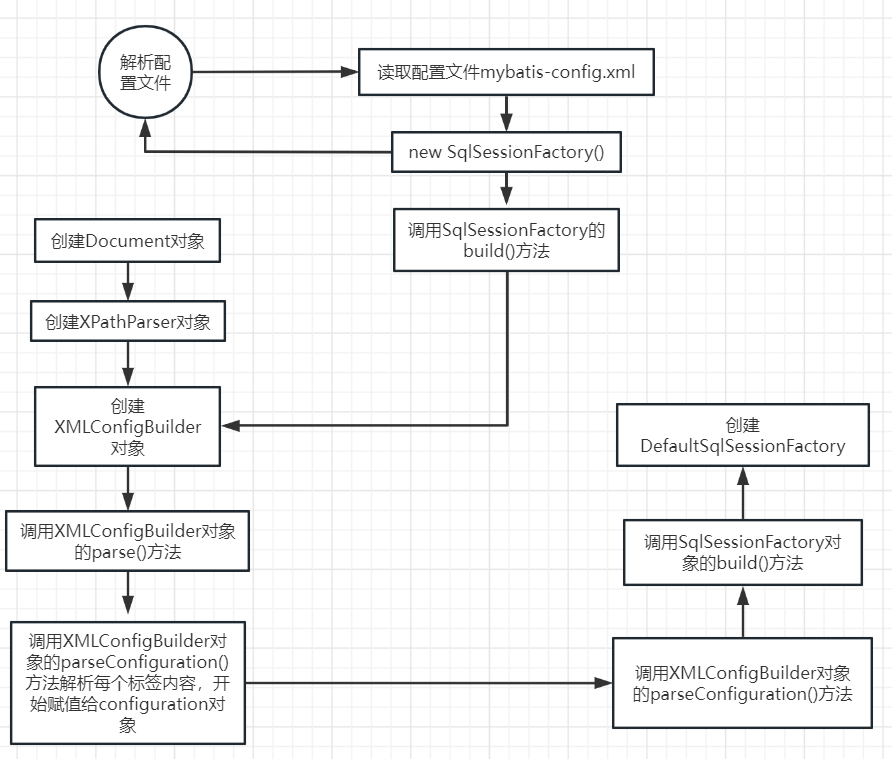
当我们获取到SqlSessionFactory之后,相当于初始化工作已经全部处理完成了,DefaultSqlSessionFactory中包含着Configuration的引用,所有的配置(Mapper、TypeHandler等等)都加载在Configuration中了。

具体配置请移步:
https://mybatis.org/mybatis-3/zh/configuration.html
